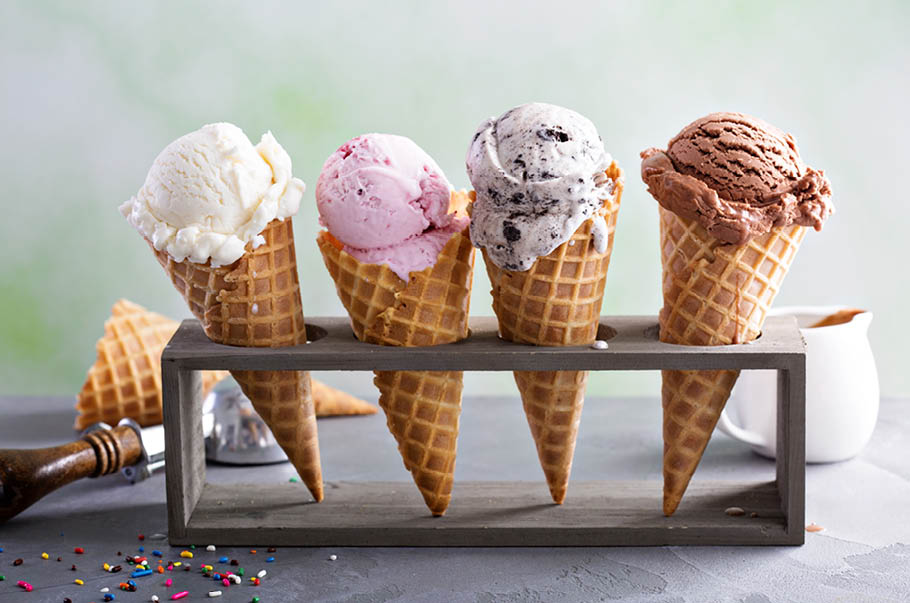The Poles eat more and more ice cream, but we still have some way to go before we reach the global top consumers, including New Zealand with 25 liters of ice cream, the USA with 20 liters, or Sweden with a consumption of more than 10 liters per person.
“Ice cream consumption is affected by a whole lot of factors, such as affluence of the society, social issues, e.g. whether we often go out to restaurants, whether we eat out, as well as ice cream availability in stores. Predictions are very positive, and sales are intended to grow all the time,” Olga Walentynowicz assesses.
The data of PPL Koral show that sales are dominated by traditional tastes we remember from our childhood. The most popular ones are cream (39%), chocolate, and fruit (25% and 23% respectively). Quite rarely do we decide to experiment. A last year’s survey has shown that only 13 percent of consumers reach for unusual tastes.
“Polish people are not fond of such novelties as spinach-flavoured ice cream. We are more oriented to tastes which are traditional but unheard of as ice cream. This year’s hit is poppyseed ice cream in white chocolate with marzipan. These are tastes we know, yet they come as a surprise when served as ice cream,” Walentynowicz points out.
Scooped ice cream is the most popular (30%), and if we choose packaged ice cream, it is usually family ice cream in a large package (29%). Ice pops and cones are chosen significantly less frequently, yet much depends on the weather.
“Declarations in surveys of the favourite ice cream form is one thing, but if the weather is very fine and hot, Polish people will definitely reach for impulse ice cream. Ice pops come first in such circumstances, bringing instant refreshment,” Walentynowicz comments.
Although we are usually motivated by price when choosing ice cream (41%), we pay increasingly more attention to the composition and content of natural ingredients, as well as the form of serving (38% and 36% respectively). The product brand is important, above all, to people over 50 years of age.
“Consumers are becoming more demanding and increasingly conscious. They pay more and more attention to the content of products and the manufacturer. Therefore, producers have to try increasingly hard and pay attention to everything – from composition to packaging and the manner of sale. Our experience shows that Polish people also pay much attention to ice cream packaging. We always try to surprise; we have already had ice cream in a jar and this year, we offer ice cream in a package with a hologram,” says Olga Walentynowicz.
Olga Walentynowicz, PR Manager, PPL Koral
Source: Newseria.pl












